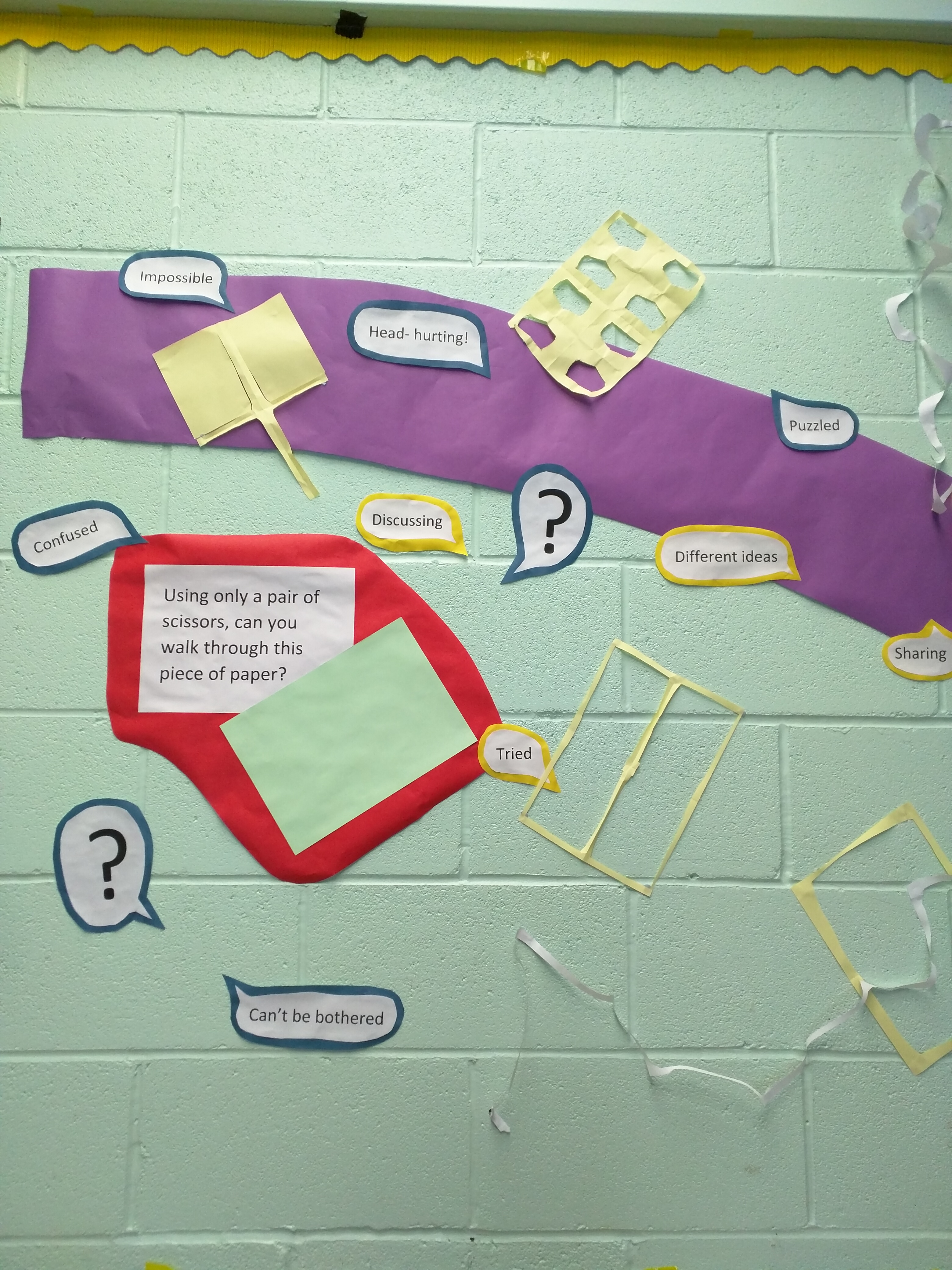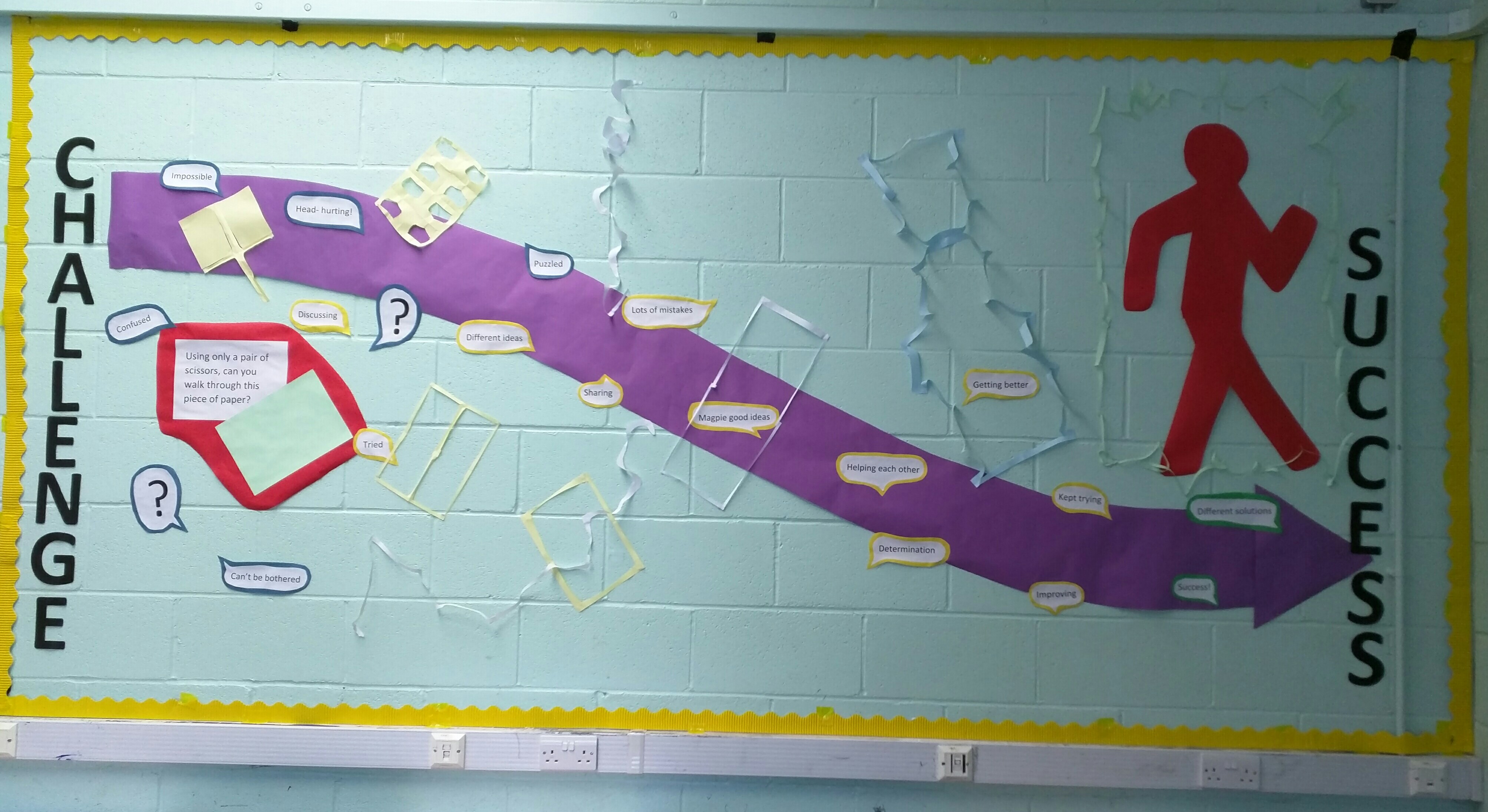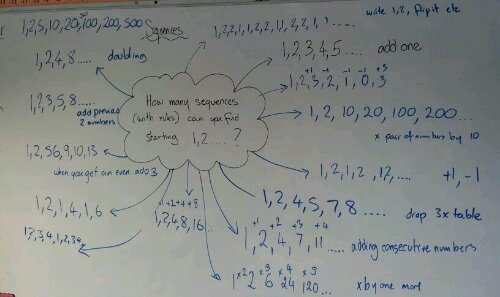Anyone else been purging their classrooms of ragged wall displays ready for a fresh start in September? But then you end up rushing displays ready for the Autumn Y6 open evenings? And you need to get to know your new classes too!
Mrs D had a splendid plan to address all these issues. The first step was to introduce the problem: step through a piece of paper. It’s a classic problem involving maximising perimeter – I remember seeing it in a children’s Annual as ‘The journey through a postcard’.

This isn’t the easiest of tasks and takes a fair bit of determination and patience. Teamwork skills are also helpful. You can really get to know your class with this activity.

Once they’ve figured out how to do this you can reflect on how they overcame obstacles. All of this can be pulled together to make an amazing wall display on problem solving.

Thank you to the excellent Mrs D for allowing me to share her idea!


